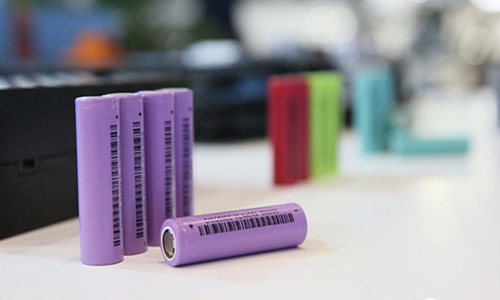Tesla 18650 Battery Specs - Introduction, Quantity and Dimensions
APR 19, 2021 Pageview:6263
Tesla has been the hottest talk of the town because of well, its owner and CEO Elon Musk and his coming-of-the-age tweets and the power he holds to sway markets with just one click. The company’s existence stems from cars powered by Lithium-ion batteries since they have the highest charge capacity of any practical formulation in battery technology history.
What are Tesla 18650 battery Specs?
Battery cells are deceptively straightforward devices comprising three essential components. It includes two electrodes, a negative anode and a positive cathode separated by a chemical soup called the electrolyte. Once the battery is charged, lithium ions are forced to travel to the negative electrode, where the deposition process takes place.
Tesla has been utilizing 18650 cells manufactured by Panasonic in Asia for its S and X model cars since 2013. However, the cell size is slightly larger than the standard AA cells. The dimensions of the cylindrical cells are 18 mm in diameter and 65 mm in length.
The design, as experts predict, was input by Tesla and is now one of the most feasible formulations available today. These batteries deliver robust and reliable performance features even in the harshest automotive environment.
Tesla batteries are an excellent choice for various projects, such as EV conversions and fixing, backup power, solar power storage and usage, RV power, off-grid setups, and more. Moreover, the energy density is unmatched, which, as a result, makes the product revolutionary in terms of specifications. The 85-type batteries entail an energy density of 200 wh/kg. Apart from this, the 18650 battery also includes:
●A capacity of 5.2 kWh or 233 Ah
●A continuous charge power capacity of 5 kW
●The module’s collective energy density is 200 Wh/kg
●The cell type is Tesla Custom Panasonic 18650
●The terminals are M8 bolts with 13 mm included
●The nominal voltage is 22.2 volts, while the maximum voltage is 25.2 volts, and the minimum voltage is 18 volts.
●The cell configuration stands at six series of 74 parallel 444 cells.
The Tesla battery packs with 18650 Panasonic batteries can charge no faster than 20 to 40 minutes based on the usage. However, it is the fastest any battery pack can charge. One of the crucial requirements for an electric car is that they need to be charged frequently on longer road trips. Since car batteries involve direct current (DC), it typically takes anywhere in the range of 20 to 40 minutes for them to charge. Tesla provides their customers with the latest battery technology in vehicles.
The highest charging voltage for a Panasonic cell is 4.2 volts. Panasonic specifies a maximum charging current of 2 amperes per cell. However, Tesla allows charging current to be up to 4 amperes in their battery cell packs. Therefore the total power that a Tesla battery pack can use for charging is 4.2 X N X I, where N is the number of cells in the battery, and I is the maximum continuous current allowed per cell. For 85/90 kWh battery packs, the calculation works out to be 7,104 X 16.8=119.3 kW. For the 100 kWh packs, it is 8,256 X 16.8=138.7 kW. There is no way to charge more instantly without increasing the highest charging current per cell. It might hasten the degradation of the cells or worse.
All rechargeable batteries lose their potential overtime as unfeasible secondary reactions take place, thus wasting energy. Apart from this, they also produce byproducts, preventing lithium ions from reaching the anodes during charging. However, Tesla battery packs are warned against failure but not degradation. Early indications have conceded that 18650 cell degradation is very gradual, losing only one or two percent of capacity per year at the worst. The cells are resistant to degradation and provide the best value for money to clients.

How many 18650 batteries are there in a Tesla?
The most popular Tesla battery pack contains 7,104 18650 cells in 16 444 cell modules. The entailed capacity by the 18650 batteries stands at 85 kWh of energy. In 2015, Panasonic modified the anode design, which further expanded the cell capacity by 6 percent, which is a lot considering they are making batteries for an electric car company whose revenue optimization relies on technology advancement.
More recently, Tesla engineers reconfigured the pack’s battery structure to hold 516 cells in each module for a total of 8,256 cells. This newly redesigned structure is capable of holding a little more than 100 kWh of energy. As a result, car owners would be able to enjoy electric vehicles with a distance range of 300 miles.
Tesla Model’s Battery Pack Dimensions
The 85 kWh battery pack contains 7,104 lithium-ion batteries in 16 modules wired in a series arrangement. The pack entails 14 in the flat section, while two are stacked in the front. Each module contains six groups of 74 wired cells arranged parallelly, further wired in series within the module. The pack’s approximate dimensions are 27 x 12 x 3 inches and contain custom Panasonic 18650 cells. Apart from this, the average weight is documented as 58 lbs and offers an energy density of 200 wh/kg.
The battery entails the most impressive specifications, and the pack’s dimension offers a compact yet efficient design compared to the alternatives available in the market. The rechargeable lithium battery pack provides users with quick charging even when they are undertaking longer road journeys, while the cars are famous for their ample space.
The Tesla 18650 batteries are the newest and the most revolutionary packs available in the market. As a result, this article strived to provide everything information there was on Tesla 18650 batteries. The specifications are extraordinary. With the company already optimizing its battery’s performance, it won’t be long that Tesla will develop a more efficient solution offering more distance range to its customers.
Leave Message
Hottest Categories
-
Hottest Industry News
-
Latest Industry News










